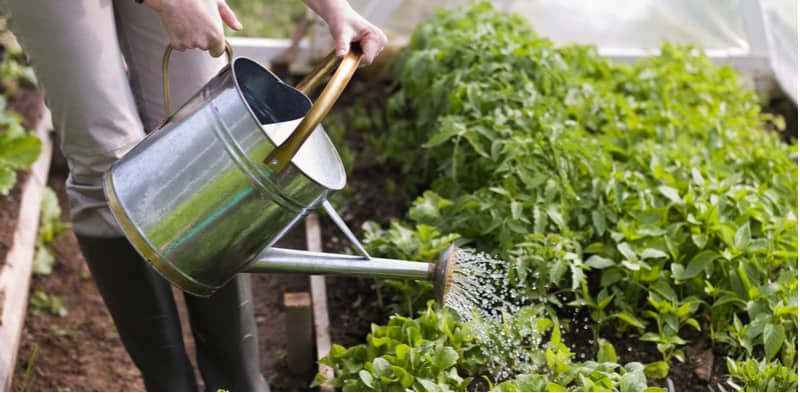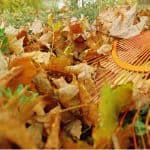Last updated on March 24th, 2022
Our site is reader supported, this means we may earn a small commission from Amazon and other affiliates when you buy through links on our site.
Watering doesn’t come free, so knowing when to water your plants can help you economically by preventing water loss for your plants and your soil so that you only spend what you have to.
When to water plants – Water morning and evening when possible
The best time to water your plants is early in the morning before the temperatures get too warm and the sun gets too high in the sky. If you wait until later in the day it will lead to faster evaporation loss, which means only a percentage of the water you give your plants will actually be absorbed by the roots. On summer days, when the weather is significantly warmer it’s also possible to water in the evening when the dry soil will happily absorb the water with a limited risk of evaporation.
Try to avoid watering in the afternoon to prevent burning the foliage of your plants
Watering in the afternoon also increases the chances of burning the leaves of plants some of which are very suspectable to burning, such as Begonias and Cordylines.
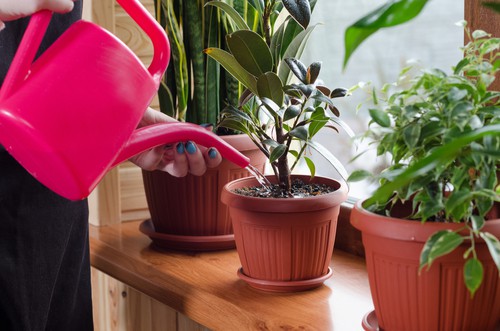
In order to determine whether a specific plant needs water, you should look at the soil. If the soil feels damp, especially at the very top, you don’t have to water. Once it starts to feel dry, and you poke your finger down a few centimetres and it’s dry all the way down, then it’s time to water.
If you have clay soil, it can feel damp even when there is no water in the soil. Sand soil, conversely, can feel dry even if there’s water in it. Obviously, if the leaves start to wilt and change in colour, it’s indicative of a desperate need to water. If you have sand or clay soil eventually you will get better at identifying the signs of when it’s time to water.
Don’t forget potted plants often need watering more frequently than plants grown in beds and borders.
Potted plants dry out faster than plants in the ground. However, you can exercise the same rules for the time of day and for testing the dampness of the soil. If the potting compost feels dry to the touch it’s time to water. When growing plants in tubs consider using soil-based compost (such as John Innes potting compost) that retains moisture better.
Feel the weight of hanging baskets to gauge when they need watering
If you have hanging baskets then the same also goes and you can feel the weight of the basket, by doing this regularly you will soon learn when the basket feels dry just by the weight. You can also buy water-retaining granules to add to both baskets and tubs.
How to water your plants properly
You always want to water your plants before a drought starts so that the moisture levels in the soil are able to build up their defences. Once there is a drought, light watering over a large area of your garden will only encourage the surface-level roots and not deep roots, which in itself, leaves your plants highly susceptible to increased wilting. In this particular situation, preventative watering is the key. When you notice plants suffering during a drought, water that single plant thoroughly. Do so in the very early morning or in the late evening when the weather is cooler so that you can prevent evaporation loss.
Always try to water around the base of plants and not onto the foliage itself
Always try to water around the base of the plants if possible and not over the top of the foliage. The foliage acts as an umbrella and often diverts the water around the edge of the root system.
You want to avoid watering where there is bad drainage because adding additional water, even if the top of the soil feels dry, will do more harm than good. Focus on rectifying the drainage issue before you water again. This could be as simple as digging some grit or organic material into the soil.
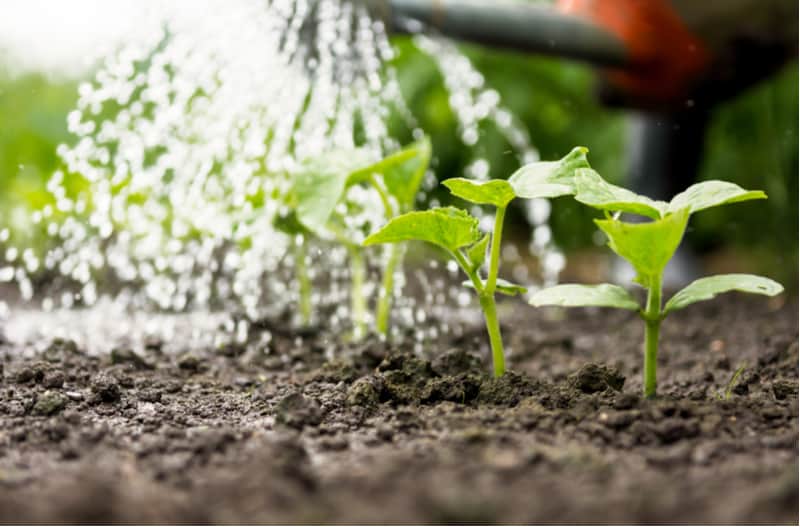
How much should you water your plants?
If you have light, sandy soil it will need watering more frequently than heavy soil, however, heavy, clay soils might need heavier applications, even if the frequency is less.
Practically speaking, you can save water by applying it directly to the base of the plant instead of just watering over a vast area. If you have a garden, for example, with rows of vegetables and individual plants, you don’t need to spray water from the hose over the entirety of your garden. Instead, you can water directly at the base of each individual plant and this will not only allow the plants to absorb the water directly into their root structure but it will save you economically on water loss.
How to best water your plants
Sprinklers, hose pipes, soaker hoses can all help water more efficiently
The best method for watering your plants is really based on the setup you have in your garden. Sprinklers are an ideal solution for lawns. But if again, you have rows of vegetables, sprinklers are not the most effective solution and using a soaker hose might be a much better solution.
Most garden watering, as mentioned, should target the base of the plant directly under the foliage canopy. This ensures that the water gets where it needs to be most, and it prevents weeds from cropping up everywhere else so it’s also a good way to also help prevent weeds. Such a targeted effort is best done with hoses with long lances and watering cans.
See our top recommended hose pipes in this guide
See our top recommended lawn and garden sprinklers in this guide
For more advanced operations, gardens where you might be growing enough food to get you through most of the year, you can use soaker hoses to accurately water the plants you have established in rows. You can hide these beneath the soil to prevent evaporation loss.
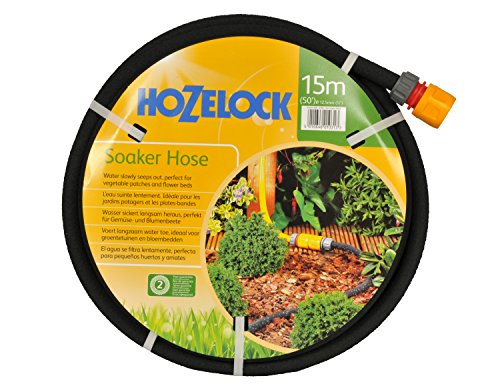 Soaker hose for watering at ground level – Click here to view on Amazon.co.uk
Soaker hose for watering at ground level – Click here to view on Amazon.co.uk
Use water timers to control the amount of water and time of day of watering
You can also use automated irrigation systems to help regulate the amount of water that is released at different times of the day.
 Orbit 96781 ‘Buddy HF’ Single-Port Digital Tap Timer – Available at Amazon.co.uk
Orbit 96781 ‘Buddy HF’ Single-Port Digital Tap Timer – Available at Amazon.co.uk
See our top 5 recommended water timers for scheduled automatic watering in this guide
Tips for successful watering:
- Not all plants are the same. If you have an established tree it won’t need watering as much as a brand new tree. But you will still need to do a few extra rounds of watering if you notice that your plant is drought-stressed.
- Newly planted areas are very vulnerable to water stress so you need to make watering these areas a top priority.
- If you are cultivating herbaceous perennials they need frequent watering during hot weather to boost their performance.
- Edible produce will be significantly better in quality and quantity if you water preventatively, in such a fashion as to prevent drought stress. Leafy crops like spinach and lettuce should never be without water. Onions, however, require very little watering but can bolt if not watered enough. Pay attention to the crops that you are growing and what their individual watering requirements are. Don’t assume that all crops are the same.
- Lawns will need greater amounts of water to thoroughly irrigate them, especially larger lawns. To save water during the warmer, summer weather, you can mow less closely to the ground allowing the grass to grow taller, and mow less frequently.
- To help retain moisture within the soil you can always add a layer of mulch around the base of your plants.
Image credits – Shutterstock.com

